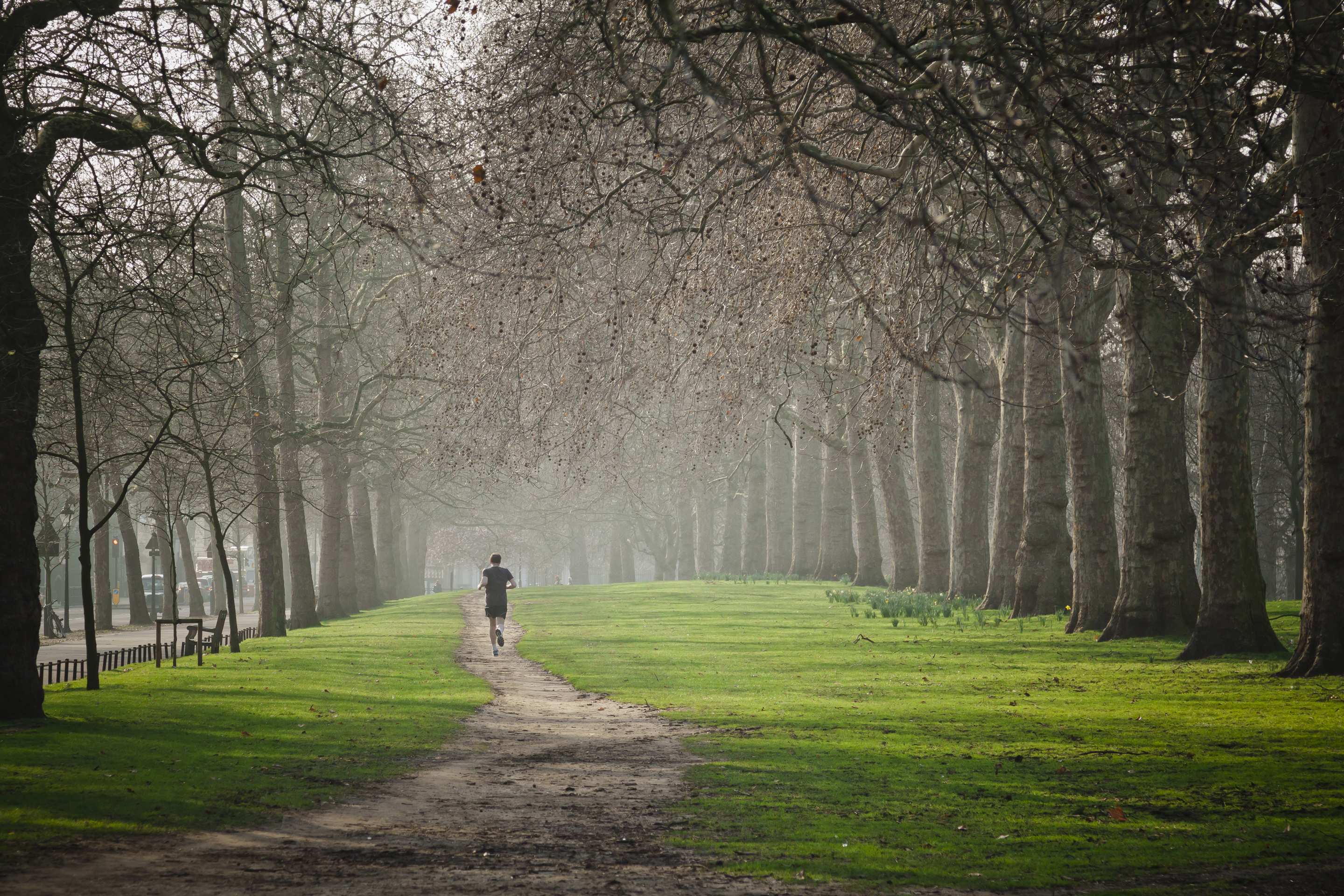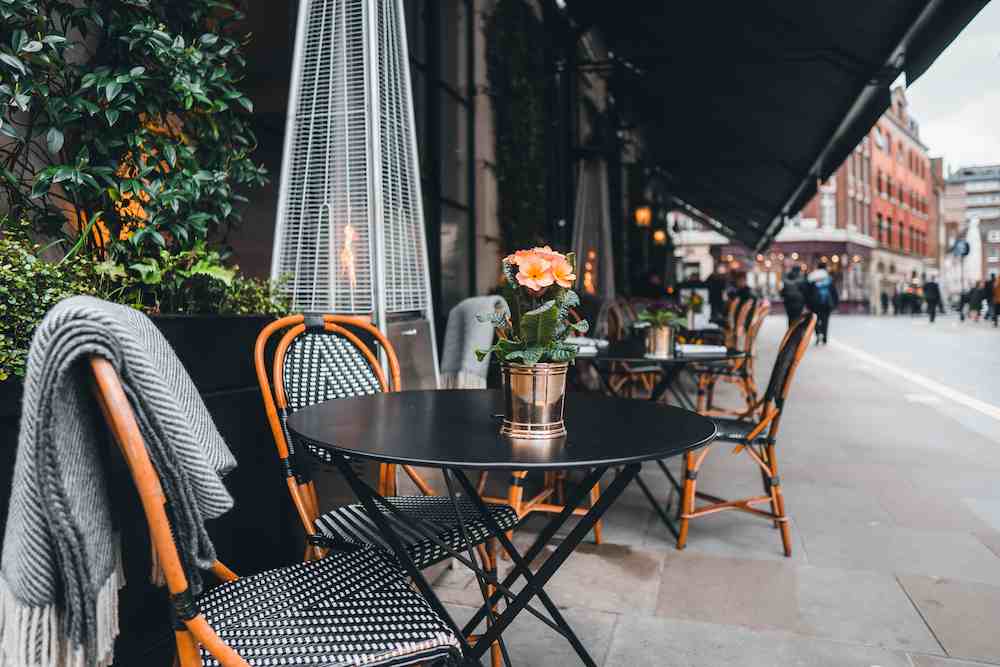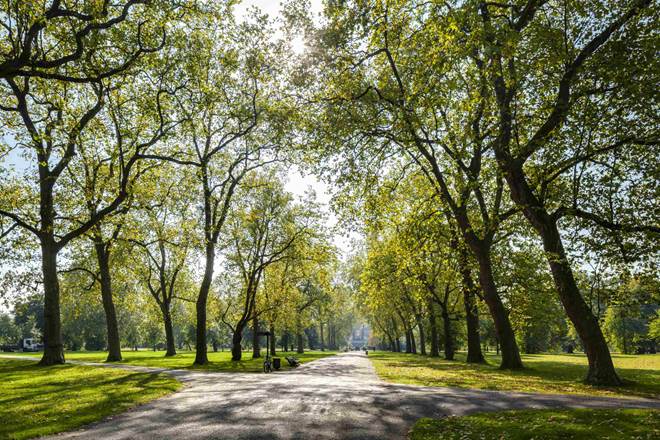Whether you want to take advantage of the high-quality restaurants or fancy exploring the Serpentine Galleries, Hyde Park offers the best of both worlds.
What’s in this guide?
- Things to do at Hyde Park
- Hyde Park history and facts
- Restaurants, bars and shops nearby
- Opening times and prices
How to get to Hyde Park
Thanks to its central location and London’s excellent public transport system, getting to Hyde Park is easy. You can travel by bus, train, or the city’s underground transport system (tube).
The fastest way to get to Hyde Park is by tube. You can take the Central (red) line to Lancaster Gate or Marble Arch station. Or, you can take the Piccadilly (blue) line to either Hyde Park Corner or Knightsbridge, where you’ll be right at the entrance.
Alternatively, you can take the bus. Busses in London cost a flat rate of £1.55.
Arriving by train? The nearest train station is London Paddington, just a 10-minute walk away.
Things to do at Hyde Park

Covering more than 300 acres, Hyde Park is one of London’s most prominent and picturesque Royal Parks. And it’s also the biggest, as it adjoins Kensington Gardens to the west. In total, it takes about two hours to walk around Hyde Park.
From football pitches and boat-rowing to fascinating art galleries and historic landmarks, Hyde Park always finds new ways to entertain and awe. Here are just a few of the things you can see and do around this beautiful green space.
Kensington Palace
Located at the western edge of Hyde Park, Kensington Palace was the birthplace of Queen Victoria and has been a property of the Royal Family since 1689. Today, it’s the official residence of the Duke and Duchess of Cambridge.
One of England’s most notable architects, Sir Christopher Wren, also responsible for St Paul’s Cathedral, designed Kensington Palace. The red brick façade is as magnificent as the opulent interiors resembling Versailles.
Stunning frescoes, elegant furniture and wallpapers are just a few of the elements that make the palace so unique, not to mention the scenic garden – laid out in 1728 by Queen Caroline. After your visit, be sure to pop into the Palace Pavilion Restaurant for a treat.
Speaker’s Corner
This public forum is a space to exchange ideas, talk about political matters and convey messages – it’s been that way for decades. It’s where anyone can express themselves or just listen to someone else’s point of view.
Located opposite Marble Arch, this corner of Hyde Park was used by writer George Orwell and philosopher Karl Marx to encourage free speech. In 1872, a law was passed that officially set aside this part of the park for public speaking. So, if you feel particularly passionate about something that you’d like to share, this could be your springboard.
Hyde Park’s war memorials
Hyde Park is home to many war memorials as one of London's main attractions. One of these is the Royal Artillery War Memorial, which pays tribute to those who served and died in the Royal Regiment of Artillery. A stone’s throw from this is the Machine Gun Corps War Memorial, completed in 1925.
There are also other memorials scattered across the park, dedicated to soldiers from different parts of the world who died in World War II. These include the Norwegian Navy, the Merchant Fleet and the Canada Memorial.
The Serpentine Galleries
On either side of Serpentine Lake, these galleries are for art enthusiasts and everyone else. Showcasing some of the country’s most fascinating contemporary art exhibitions, they host up-and-coming talent on an ever-changing programme. Not to mention permanent masterpieces by Andy Warhol, Man Ray, Damien Hirst and Henry Moore.
The new Serpentine Sackler Gallery opened in 2013, including a shop, restaurant and bookshop.
Hyde Park history and facts
A significant landmark since 1536, a visit to Hyde Park is mandatory if you’re exploring London. This Grade I listed park boasts a long-standing history. It’s also the most extensive Royal Park in Central London, covering more than 300 acres.
Despite the Gate being established in the 17th century, Henry VIII first acquired the park in 1536 from the monks of Westminster Abbey. The park remained private and was mainly used by Henry VIII to ride and hunt deer. It became public with limited access when James I came to the throne in 1625. He hired a keeper and a ranger to look after the parklands.
Hyde Park was finally opened to the public in 1637 when Charles I became King. In 1665, the city was hit by the Great Plague. Many Londoners fled to the park to escape the disease.
In the 1730s, Queen Caroline created the Serpentine Lake, a body of water covering around 30, one of the park’s main attractions. Since then, Hyde Park has transformed into a site for royal and national celebrations. In 1851, it hosted the Great Exhibition, where thousands of artists and inventors works were displayed. Visitors included Charles Darwin, Charles Dickens and George Elliot.
The Serpentine Lido was set up in 1930 by George Lansbury, and the Silver Jubilee Exhibition was also held in the park in 1977 in honour of Queen Elizabeth II’s 25 years on the throne. Today, Hyde Park is a space for recreation, attracting more than 10 million visitors every year.
Restaurants, bars and shops near Hyde Park

Hyde Park is the perfect place for an afternoon stroll, picnic, swim or sunbathe. If you’re hungry after your visit, you’ll be pleased to know there are plenty of restaurants and cafés dotted around Hyde Park.
If you’re in the mood for some drinks, you’ll have plenty of choices, too. There’s no shortage of pubs and bars near Hyde Park with Notting Hill and Kensington on your doorstep. Not to mention endless shopping opportunities!
Best restaurants near Hyde Park
Hyde Park is close to many foodie gems, from Italian eateries and European dining to the beloved classic pubs.
- The Champion Bayswater Road
- Hide
- Chucs Mayfair
- Aubaine Kensington
- El Pirata
- Steak & Lobster Marble Arch
- Balans Kensington
- The Grenadier
- May Fair Kitchen
- The Alfred Tennyson
- The Mall Tavern
Best bars near Hyde Park
These bars provide the ideal pitstop while strolling around Hyde Park.
- The Promontory
- Trader Vic’s
- Vagabond Paddington
- Boisdale of Mayfair
- Percy’s
- German Kraft Brewery Mayfair
- The Pub
- Bibliophile
- Woodlawn Tap (Jimmy’s)
Opening times and prices
Hyde Park is open every day from 05:00 to midnight, and entry is always free. It’s a perfect place to visit if you’re spending time in London on a budget. Hyde Park’s beautiful Serpentine Galleries are also free, but it helps to book a timeslot online before you arrive.
Travelling to London by train?
Planning on spending some time in the capital of England and want more information on travelling to London by train? Start your journey now! Travelling to London by train is simple due to the high-speed rail connections operated by 28 major train companies across the UK. You can travel to London from some of the most popular cities in the UK, including Edinburgh to London (4h), Birmingham to London (1h 21m) and Oxford to London (47m).
Need more information about travelling to London by train? Check out our dedicated page to trains to London.
